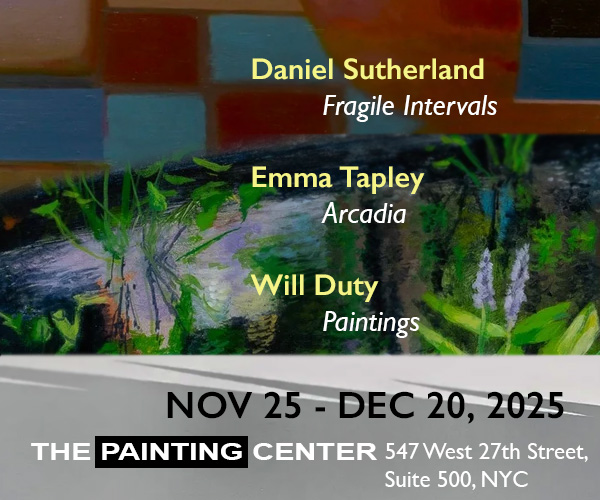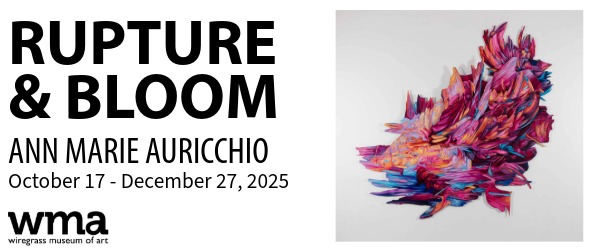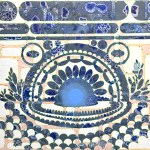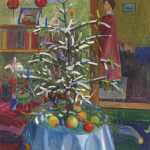
Rather than parse the differences among us, Mike Cloud’s new paintings address the one experience we all have in common regardless of race, gender, ethnicity, wealth, or nationality: impending death. For his solo show at Thomas Erben, on view through November 2, Cloud has used stretcher bars, belts, fabrics, paint, and other materials to create a series of abstract portraits of people who have died from hanging or beheading. Some, like Dorothy Stratten and Anthony Bourdain, were famous, others, like Marta Jose Reyes, were not. On the occasion of the exhibition, Cloud has put together a list of fifteen ideas and influences that inform his work.

Cloud gleaned the first seven ideas from Huey Copeland, a critic who, like Cloud, is based in Chicago. He discovered Copeland’s writing through a book review, “One-Dimensional Abstraction,” of art historian Darby English’s 1971: A Year in the Life of Color that was published in Art Journal Open. The final eight ideas are from G.W.F. Hegel, the German philosopher, whose work Cloud began reading while he was a grad student at Yale. Throughout the post he has included images of his extensive collection of dice.

*Seven ideas I gleaned from Huey Copeland:
9. Visual racialization, stereotyping and caricature are forms of abstraction.

11. There are no adequate critical frameworks for thinking about American art that uses abstraction as a political site in relation to directly political figurative work.

12. The art historiographies of marginalized groups tend to focus on vernacular traditions or representational practices with political intent.

17. The integrationist ambitions of Abstract painting and its appeals to the future provide progressive individualists with an alibi for the continued repression of marginalized social groups.

21. Greenberg never published a single word positive or negative on the work of a black artist during his lifetime.

22. Marginalized artists must move beyond mainstream institutions and aesthetic criteria to avoid reproducing the erasure that structures the segregated art world.

24. Discredited schemata of canonization and double standards of valuation discursively re-inscribe the divisions within the segregated art world.

*Seven ideas I gleaned from Georg Wilhelm Friedrich Hegel:
2. Human existence is a spiritual individuality that emerges out of, and makes itself known through the sensuous material of our bodies.

6. Works of Art do not aim to produce pleasure only after study, reflection scholarship and examination.

11. Painted characters are spirits who have been drawn into a community of spirits and have become particularized within that community.

14. To become particularized, individuals must achieve independence from divinity, nature and other individuals in mental or physical life, while conversely having a firm, intimate connection to divinity, the community, the natural environment and the endless needs, aims, passions, actions and deeds of human existence.

16. Painting uses the principles of mediation and synthesis to unite a subjectively invented external environment of architectural and sculptural shapes into an embodiment of spiritual subjectivity.

17. The heart and soul of the painted ground’s painterly treatment reflects what is subjective and in harmony with the spirit of the moving figure.

22. The essential principle of painting is the feeling, thinking, acting subject embracing heaven, the variety of earthly situations and external bodily appearances.

“Mike Cloud: Tears in Abstraction” Thomas Erben Gallery, 526 W 26th St, New York, NY. Through November 2, 2019.























So many potent ideas happening here.